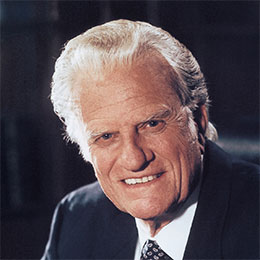What to Expect During Your First Chiropractor Appointment
Published in Health Articles
Visiting a chiropractor for the first time can be a bit daunting, especially if you’re not sure what to expect. Whether you’re seeking relief from back pain, neck pain, or looking to improve your overall well-being, understanding the process can help ease any apprehensions you may have.
Here’s a comprehensive guide on what to expect during your first chiropractor appointment.
Initial Consultation
Here are the key steps and information you can anticipate during your initial visit to ensure a smooth and informative experience.
Medical History
During your first appointment, the chiropractor will ask about your medical history. This includes any past injuries, surgeries, or ongoing health issues. It’s important to be honest and detailed when sharing this information. The chiropractor needs to understand your health background to create a personalized treatment plan.
If you’re looking for a welcoming environment to discuss your medical history, consider visiting Olympia Chiropractic Center. They prioritize patient comfort and care.
Physical Examination
After reviewing your medical history, the chiropractor will conduct a physical examination. This exam helps them assess your posture, movement, and overall health. They may check your spine, joints, and muscles. You might be asked to perform simple movements to see how your body responds. This process helps the chiropractor pinpoint areas of tension or discomfort.
If needed, they will use techniques from adjust chiropractic practices to evaluate your body’s alignment and function more closely. This examination is crucial for developing an effective treatment plan tailored to your needs.
Diagnostic Tests
Here are the essential diagnostic tests that your chiropractor may recommend to better understand your condition and tailor an effective treatment plan for you.
X-Rays and Imaging
Your chiropractor may recommend X-rays or other imaging tests to get a clearer picture of your spine and joints. These tests help identify any misalignments, fractures, or other issues that might not be visible during a physical exam. X-rays are quick and painless, capturing images that allow the chiropractor to assess your body’s structure.
By understanding your spine’s alignment, the chiropractor can create a more effective treatment plan. Imaging results can show not just the bones but also the surrounding soft tissues, helping to guide alignment chiropractic techniques.
Spinal Analysis
Spinal analysis is an important step in your chiropractic visit. During this process, your chiropractor will look closely at your spine to check for any issues. They might use various tools to measure your spinal alignment and movement. This analysis helps identify areas that may cause pain or discomfort.
By understanding the condition of your spine, the chiropractor can decide on the best core chiropractic techniques to use in your treatment. This ensures that your plan is tailored to your specific needs and can promote better overall health.
Treatment Plan
Here are the key components that will be included in your personalized treatment plan to address your specific needs and goals effectively.
Discussion of Findings
After the examination and tests, your chiropractor will discuss their findings with you. They will explain what they discovered about your spine and overall health. This conversation is important because it helps you understand your condition better.
The chiropractor will talk about any misalignments, pain points, or areas of tension they found. They will also explain how these issues may be affecting your daily life. Together, you will discuss the best treatment options available to address your specific needs.
This is a chance for you to ask questions and share any concerns you might have. The goal is to ensure you feel informed and confident about your treatment plan moving forward.
Setting Goals
After discussing your findings, the next step is to set clear goals for your treatment. This involves talking with your chiropractor about what you hope to achieve. Your goals might include reducing pain, improving mobility, or enhancing overall well-being. It is important to be specific about what you want. This helps both you and your chiropractor focus on a plan that works best for you.
Regularly reviewing these goals will allow you to track your progress and make adjustments to your treatment as needed. Your chiropractor will support you in reaching these goals and achieving the best possible outcomes.
Personalized Treatment
Your chiropractor will create a treatment plan just for you. This plan will depend on your health goals and findings from your exam. Treatment may include spinal adjustments, exercises, and lifestyle changes. Spinal adjustments help realign the spine and reduce pain.
Exercises can improve your strength and flexibility. Your chiropractor will also suggest ways to enhance your daily routine for better health. This tailored approach ensures you receive the best care possible. Regular visits will help track your progress and make any needed changes to keep you on track towards your goals.
The Adjustment
Here are the various methods and techniques that may be employed during your adjustment to help restore proper alignment and function to your spine.
Manual Manipulation
Manual manipulation is a common technique used by chiropractors during adjustments. This method involves the chiropractor using their hands to apply controlled force to specific areas of your spine. The goal is to realign the vertebrae and improve your overall mobility.
You might hear a popping sound, which is normal and often occurs when gas bubbles in the joints are released. This technique can help reduce pain, improve function, and enhance your body’s natural ability to heal. Your chiropractor will carefully assess your condition to ensure that manual manipulation is safe and effective for you.
Gentle Techniques
Gentle techniques are often used to adjust the spine without forceful manipulation. These methods are perfect for patients who may feel anxious or have specific conditions. One common gentle technique is called “activator method.” This involves a small device that delivers a quick, low-force impulse to the spine.
Another method is “myofascial release,” which focuses on relaxing tight muscles and fascia around the spine. Chiropractors may also use “biofeedback” to help patients learn to control muscle tension.
All these techniques aim to provide relief and improve movement while ensuring comfort and safety. Your chiropractor will choose the method that best fits your needs and preferences.
Post-adjustment Care
Here are some important considerations for your post-adjustment care to maximize the benefits of your treatment and promote overall wellness.
Immediate Effects
After your adjustment, you may notice several immediate effects. Some people feel relief from pain, while others may experience slight soreness. This soreness is similar to feeling after exercising and usually goes away within a day or two.
You might also feel more flexible and able to move better. It is common to have a sense of relaxation throughout your body. Drinking plenty of water after your visit can help flush out toxins released during the adjustment. Your chiropractor might give you specific instructions for care at home to help you feel your best.
Follow-up Appointments
Follow-up appointments are very important in chiropractic care. They help your chiropractor check your progress. During these visits, your chiropractor will ask how you feel. They may also do some tests again to see if you are improving.
It is important to be honest about your pain and comfort level. This information will help them adjust your treatment plan if needed.
Your chiropractor may recommend follow-up visits based on your needs. Some people need to come in often, while others may visit less frequently. These appointments can help keep your spine healthy and get you moving better. Always ask questions during these visits. You should feel informed and comfortable with your treatment.
Lifestyle Recommendations
Incorporating healthy lifestyle choices can significantly enhance your overall well-being and complement the benefits of chiropractic care. Here are some key areas to focus on.
Exercise and Rehabilitation
Exercise is good for your body. It helps you get stronger and feel better. After a chiropractic adjustment, exercise can support your recovery. You may get special exercises to do at home. These exercises help to improve your strength and flexibility.
Rehabilitation is important, too. This means working on any problems you have with movement. Your chiropractor may guide you through this process. They will show you how to do the exercises safely.
Make sure to follow their instructions for the best results. Consistent effort can lead to better health and less pain over time. Always listen to your body and take breaks if you need to.
Nutrition
Eating well is important for good health. Good nutrition gives your body the energy it needs. Focus on eating fruits and vegetables. They have vitamins and minerals that help you feel better. Whole grains, like brown rice and oats, are good too.
They help keep you full and give you energy. Lean proteins, such as chicken, fish, and beans, are important for muscle repair. Drink plenty of water every day. It helps keep your body hydrated. Try to eat healthy snacks like nuts or yogurt instead of sweets. Eating well can help you feel strong and support your recovery from chiropractic care.
Learn All About Chiropractor Appointment
In conclusion, visiting a chiropractor appointment can be a positive step for your health. Understanding the process helps ease any worries. Each visit is designed to address your specific needs.
From the initial consultation to follow-up appointments, your chiropractor works with you to improve your well-being. By combining treatment with healthy lifestyle choices, you can enjoy better health and a better quality of life.
Visit our blog for more!























Comments